Have you ever noticed that every once in a while something small will happen in your life that will tie all of the disparate threads of your life together and show you that they are all part of the same rope? For me, the epiphany came while practicing karate with my daughter. Many of you may not know this, but my daughter and I are both black belts in kenpo...the way of the fist. My ah-ha moment came while talking about how we were practicing and why. Without quoting her directly, and without rehashing the whole conversation, my daughter Madison told me that it wasn't enough that she was a black belt. She had already achieved that and now she wanted to be a "good" black belt. In effect she was saying that while she had earned the designation, she knew she had areas of her art that needed work and she was determined to improve them. The statement rang of honesty, honor, and respect, three of the main tenets of the Bushido code.
That night while lying in bed, I thought about the Bushido code and how my daughter was living it, even though she didn't know it. It made me stop and think about my own life as well, and that yes, I too had been following Bushido for a very long time without even realizing it! It shocked me to my core to realize that many of the decisions that I had made in my life up until now had been made following the tenets of a centuries old warrior code. A code I didn't even know existed up until a couple of years ago!
------------------------------------------------------------------------------------------------------------------------------------------------ | Call Me To See How I Can Cut Your Research Costs & Increase Your Fund's Return!
(609) 423-7660 | Subscribe To The Sure Shot Letter Here:
| -------------------------------------------------------------------------------------------------------------------------------------------------
Bushido, literally means "the way of the warrior". Oddly enough, although the concept is centuries old, a "code" was never officially written down until 1965. In fact, back in the day, "Bushido" wasn't even known as Bushido. In general it was a way of life typefied by the samurai. All samurai followed these unwritten rules to live by, as they were taught by the "feudal lord" that they worked for. Many historians agree that there are seven main canons to Bushido. These are:
Gi ... Rectitude - decency, correctness, integrity.
Yu ... Courage - guts, nerve, bravery, audacity.
Jin ... Benevolence - kindness, compassion, generousity.
Rei ... Respect - esteem, reverence, value.
Makoto ... Honesty - truthfulness, sincerity, candor.
Meiyo ... Honor - reputation, respect admiration.
Chugi ... Loyalty - faithfulness, trustworthiness, reliability. For many, it's easy to see how these traits would be important for an analyst to have. Courage to give ones opinion, even when the opinion isn't popular. Honor to always do one's best, not just do enough to get by. Honesty to quickly admit when they are wrong, and take steps rto rectify the situation. Loyalty so that all clients know that the picks given to them are the best that can be provided...not just the leftovers after larger clients have cherry-picked the best ideas or the latest garbage the investment bankers want them to push.
Rectitude, Benevolence, and Respect all go together in my opinion.Without rectitude, I would find it hard for a person to be benevolent. Only by having rectitude and showing benevolence does someone truly gain respect.Some believe that being successful at what you do garners you respect. Not so, in my opinion. while you may be acknowledged for your success or wealth, you will not be respected if your success is shown to come from ill-gotten gains or cheating.
All of us, at times, face difficult decisions. How we approach our decision making is what melds our character.Loyalty, honor, respect and courage have always been a part of my make up. When I was young, it was loyalty to my family and teams ... the circle expanded to include my clients and business partners as I've aged. In 2003, I had thecourage to step out and start my own business. In effect, I made a concious decision to eat what I kill. Ten years later, I am still here...eating what I kill. I work hard to give my clients market-beating returns and data that will help them make better decisions.
Now it is your turn to show courage. Step out of your comfort zone and try my consulting services or newsletter. Call me at (609) 423-7660. I'll ask you a few questions and we'll see if my services are right for you. At a minimum, click this link and at least read about my newsletter. See if the principles I live by are right for you. | Subscribe To The Sure Shot Letter Here:
| Call Me To See How I Can Cut Your Research Costs & Increase Your Fund's Return!
(609) 423-7660
|
Ever pick a stock that went up 4600%? It doesn't happen every day. Imagine how you'd feel walking into your boss' office for your bonus review and having that gain brought up as your crowning achievement. Or imagine walking in for a client meeting and having a client bring up that stock even though you made that call nearly ten years ago.
Let me tell you from experience that those are great feelings. You see, I made that call...the pick that went up over 4600%, back in 2003 and I have made other great calls since then that have more than doubled or tripled the money that was invested in them. Here are just a few of my triple-digit gainers over the years:
AAR Corp +444%
Children's Place +258%
Dollar Tree +578%
Chico's FAS +425%
Signet Jewelers +404%
My 4600% gainer was Cleveland Cliffs. Given I have been a consultant for the past ten years, and my reports are not typically published for public consumption, some people have said "where's the proof?" Anyone can write up a report after the fact and back date it. Here's the proof: Forbes wrote an article about my Deep Value Retail Portfolio in November 2008. Out of the eight stocks listed as Nef's Picks, seven have since generated returns of over 100%. The link will bring you to the article on the Forbes website.
So how can an analyst find triple-digit winners consistently? To be honest, it takes a lot of work. Reading is the key. Imagine going through dozens of research reports, press releases, transcripts, financial reports and press releases each day looking for potential catalysts that can drive a stock higher. Day after day, you read, collecting information on individual stocks, industries and economies looking for actionable ideas. But this is only the first step!
For each stock that you look at or read about you are also developing detailed valuation spreadsheets each showing decades of valuation data. You develop price to cash flow, price to sales, price to earnings and price to book multiples for when the stock is trading at a 52-week highs, 52-week lows and median multiples over numerous time frames. 3-year, 5-year 10-year, 20-year multiples, you calculate them all to help you try and predict how the stock will trade in the future. Working with spreadsheets becomes second nature for you.
Balance sheet strength is the final ingredient for a triple-digit winner! Many of the stocks that surge 100% or more are either small-cap stocks or are stocks of companies that are experiencing problems. Earnings visibility is usually low and a solid balance sheet and good financial strength can help to separate the gem from the pile of rocks.
So, do you want the pleasure of wowing your superiors or investors with a triple-digit gain? There are two things you can do: 1. You can do all of that grueling work I described above and hope that I told you all of the steps in the process. Or 2. you can subscribe to The Sure Shot Letter and let me do all of the heavy lifting. While I can't guarantee that any of my picks will be triple-digit gainers, I can state that I will try to give you three or four opportunities a year to swing for the fences with a well-thought-out investment idea that has the potential to rise 100% or more in the coming thirty six months.Subscribe today!
Sign up for The Sure Shot Letter now and receive a free subscription to The Daily Kill Sheet, my private blog that gives short-term trading ideas and market commentary.
| | This week I am interviewing Padraig (Patrick) Moriarty, the President and CEO of Pathfinder Capital. For the past ten years Padraig has worked as a gatherer of assets for hedge funds and private equity firms. Prior to Pathfinder, Padraig was a partner at Caplink Partners and before that, the President and CEO at Lacken Bay Partners. Padraig also had stints at EACM, Julius Baer and at Bear Stearns, where he started his financial career back in the late 1980's. So Padraig, what's in your library? Before we dig into the books that have had an impact on my career, I'd just like to point out that they are more geared towards how to negotiate effectively. We negotiate in all facets of our lives; whether with our children, or with competitors, or with those with whom we seek out a business relationship with. We must negotiate in good faith and seek out "common ground" while being objective and at the same time accomplish the best interests of our firm, people and mission. The books I mention below, all touch upon these issues. | 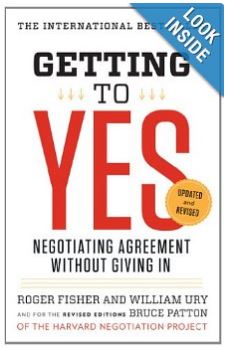 Getting To Yes: Negotiating Agreement Without Giving In by Roger Fisher & William Ury - The book reviews and provides examples of implementation for the negotiating method "principled negotiation or negotiation of merits". The book leverages findings from "The Harvard Negotiation Project". The authors found five "key" elements to "Principled Negotiation". These are: - To focus on interests, not positions.
- Invent options ofr mutual gain.
- Use objective criteria.
- Separate the people from the problem.
- Use BATNA (Best alternative to negotiated agreement).
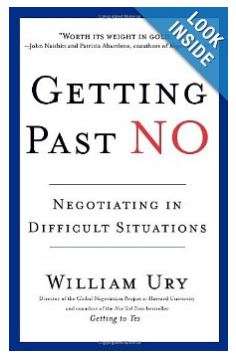 Getting Past No: Negotiating In Difficult Situations by William Ury - The author gives a five-step strategy on how to get past no. - "Going to the balcony"
- "Yes. Whatever language you use, the key is to present your views as an addition to 'or additive' rather than a direct contradiction to your opponent's point of view."
- "Why? Why not? What if?"
- "A proposal that is unacceptable coming from you may be acceptable if it comes from a third party."
- "Instead of using power to bring your opponent to his or her knees, use it to bring him or her to his or her senses."
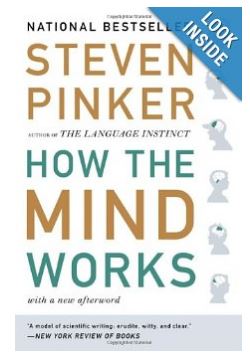 How The Mind Works by Steven Pinker - This book had an enormous impact on my career early on! The quotes below helped to shape my thinking when I constructed the EACM 100 Hedge Fund Benchmark. The EACM 100 Hedge Fund Benchmark broke down the categories of hedge funds into Relative Value, Event Driven, Equity Hedge Funds, Global Macro and Short Sellers. These categories negate a percentage of the hedge fund universe. Irrespective, the EACM 100 Hedge Fund Benchmark and categories of hedge fund strategies have helped the investor universe understand what to expect from a risk return, correlation and drawdown perspective from a potential investment within a hedge fund category. Individual manager risk, by far the greatest investment risk in the allocation of capital to an individual hedge fund manager, and the determination of a potential allocation of capital require a significant amount of due diligence. Too much diversification at the individual hedge fund manager level negates a certain level of risk but also negates a more productive level of return. With that said, the key quotes that lead me to my innovation, as well as some of my own thoughts, are below. Whether we are investing through the allocation of capital either by way of proprietary capital or as a fiduciary with client capital, we must understand the other side of our trade and why the competiton has taken a position 'directly opposite' to our own. Many in our field use 'experts' either by way of the 'Wall Street Journal' and or Economic Journals and/or competitor hedge fund manager letters to clients or allowing those 'experts' to be responsible for a part of our decision-making 'apparatus' etc. in order to have our macro views come together. Our micro views of individual trades come similarly from significant work in what can be described to our clients as internal 'experts'. In the Fifth Chapter of 'Good Ideas' within the book "How the Mind Works", "Experts are invaluable and are usually rewarded in esteem and wealth. But our reliance on experts puts temptation in their path. The experts can allude to a world of wonders--occult forces, angry gods, magical potions--that is inscrutable to mere mortals but reachable through their services. Tribal shamans are flim-flam artists who supplement their considerable practical knowledge with stage magic, drug-induced trances, and other cheap tricks. Like the Wizard of Oz, they have to keep their beseechers from looking at the man behind the curtain, and that conflicts with the disinterested search for the truth." "In a complex society, a dependence on experts leaves us even more vulnerable to quacks, from carnival snake-oil salesman to the mandarins who advise governments to adopt programs implemented by mandarins. Modern scientific practices peer review, competitive funding, and open mutual criticism are meant to minimize scientists' conflicts of interest in principle and sometimes do so in practice."
Perception vs. Reality. A healthy dose of 'second quessing' so-called experts is paramount to own mutual success together with our clients. Managers of capital as 'experts' who go from 'humility' to 'hubris and ego' beg the gods for a reality check. Stay humble!
Within 'Good Ideas' and "How the Mind Works" "The humorist Robert Benchley said there are two classes of people in the world: those who divide the people of the world into two classes, and those who do not. I took it for granted that the mind forms categories. But the habit of categorizing deserves scrutiny as well. People put things and other people into mental boxes, give each box a name, and thereafter treat the contents of the box the same. But if our fellow humans are as unique as their fingerprints and no two snowflakes are alike, why the urge to classify?"
"Psychology textbooks typically give two explanations, neither of which makes sense. One is that memory cannot hold all the events that bombard our senses; by storing only their categories, we cut down on the load. But the brain, with its trillion synapses, hardly seems short of storage space. People live for a paltry two billion seconds, and there is no known reason why the brain could not record every object and event we experience if it had to. Also, we often remember both a category and its members, such as months, family members, continents, and baseball teams, so the category adds to the memory load." "The other putative reason is that the brain is compelled to organize; without categories, mental life would be chaos. But organization for its own sake is useless. No, the mind has to get something out of forming categories, and that something is inference. Obviously, we can't know everything about every object. But we can observe some of its properties, assign it to a category, and from the category predict properties that we have not observed. To identify very specific categories we have to examine so many properties that there would be few left to predict. They represent a compromise between how hard it is to identify the category and how much good the category does you. The pyschologist Eleanor Rosch called them basic-level categories. But categories would be useful only if they meshed with the way the world works. Fortunately for us, the world's objects are not evenly sprinkled throughout the rows and columns of the inventory list defined by the properties we notice. The world's inventory is lumpy. Mental boxes work because things come in clusters that fit into boxes." Thanks Padraig. Great stuff!
As always you can buy any of the books Padraig mentioned at the The Sniper Book Bin. If you'd like to see another great read, sign up for The Sure Shot Letter, my monthly newsletter that is packed full with great investment ideas. Hit the button at the top of the page for a free sample, and/or subscribe here.
| | This week I am speaking with Dr. Prakash Dheriya, author of the Finance For Kidz book series. What is unique about these books is that they are simply children's stories, based on his own childrens' lives, but contain financial lessons in them. He explains complicated financial concepts like deflation, risk and return, and identity theft (to name a few) through stories that all children can relate to. You can find his books in the Sniper Book Bin (link at the top of the page), on amazon through the link at the top of the article or through his own website at: www.finance4kidz.com. | | | Question: What gave you the idea to start a book series targeting basic finance for children?
Answer: I saw the financial mess created by the subprime mortgage debacle and I did not want my children, who were six and seven years old at the time, to ever face that scenario again in their lifetime. I believe that if only more adults knew about the intricacies of money, they would have prevented the crisis.
I decided to educate my children about money and how it works, and that culminated in this series of books. I knew that most books on the market at that time focused on savings and budgeting. None talked about the difficult concepts of risk and return or identity theft. I made sure that I covered those in my books as I feel that little, or incomplete knowledge in finance can be more dangerous than no knowledge.
| | | Question: How have the books been received?
Answer: The books have been well received by some private schools, though it has been a struggle to change the elementary school curriculum in public schools. I know many school libraries carry them, as attested to by my library distributor. To cover most of the children in the world, I had my books translated into nine other languages, and these books are now available in over fifty countries.
| | | Question: Are any school systems currently using the books to help teach basic finance to students?
Answer: Yes, the Millard Public School System in Nebraska has developed a curriculum around these books. Financial lessons are taught to selected high school students who, in turn, then go to elementary schools and teach those concepts. | | | Question: Have you approached any of the public television stations about hosting a show based on your book series?
Answer: Yes, I have, but so far I have not met with success
Question: What is the next step for the series? Are you going to continue to add topics, or are there other plans?
Answer: My next step is to broaden my "For Kidz" series. I have already completed "Law For Kidz" and it is currently being reviewed. In addition I have "Architecture For Kidz", "Healthy Living For Kidz", "Psychology For Kidz", "Career Options For Kidz" and "Politics For Kidz" as the next sets of books.
As for "Finance For Kidz", I am now planning on converting them into comics and animating them as well. |
|
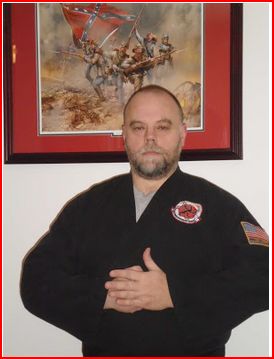





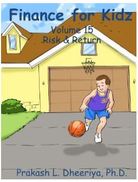


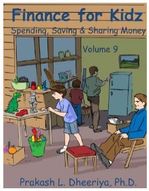
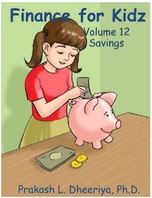
 RSS Feed
RSS Feed
